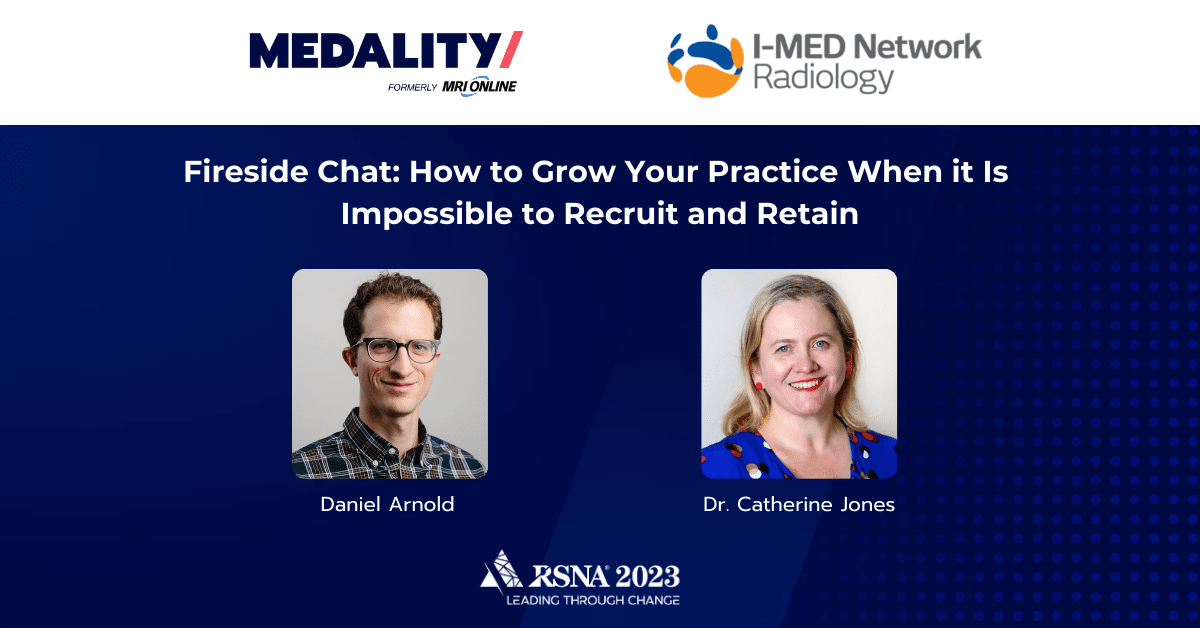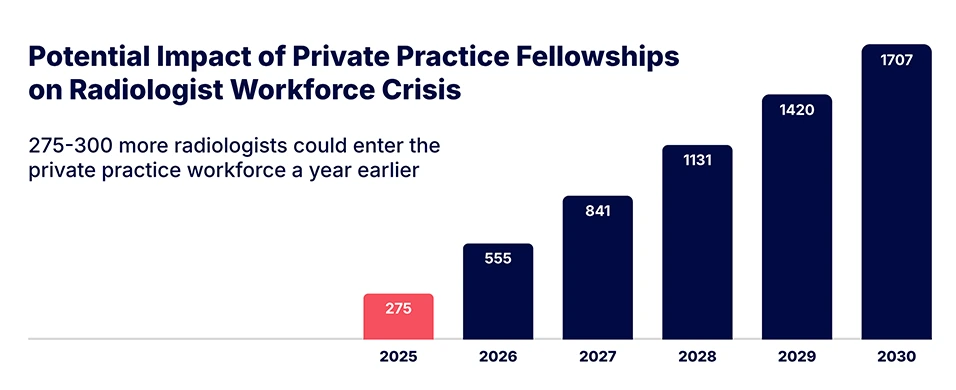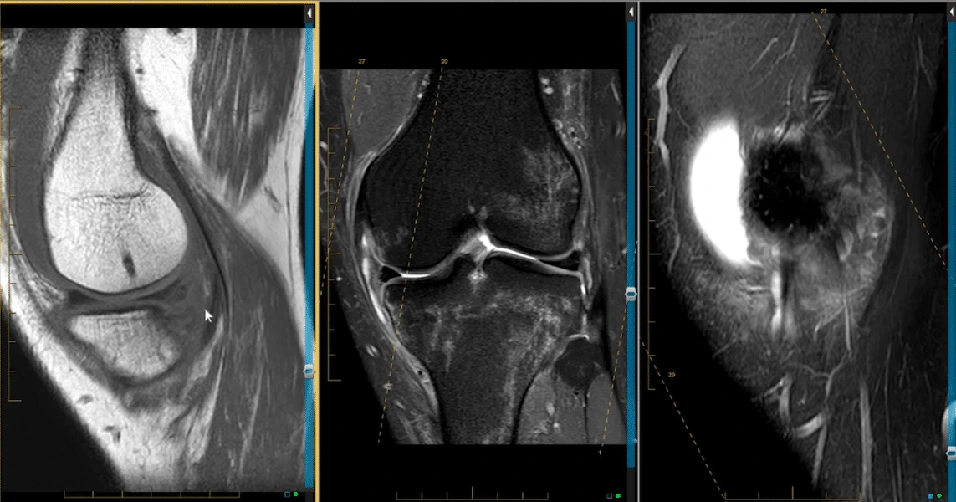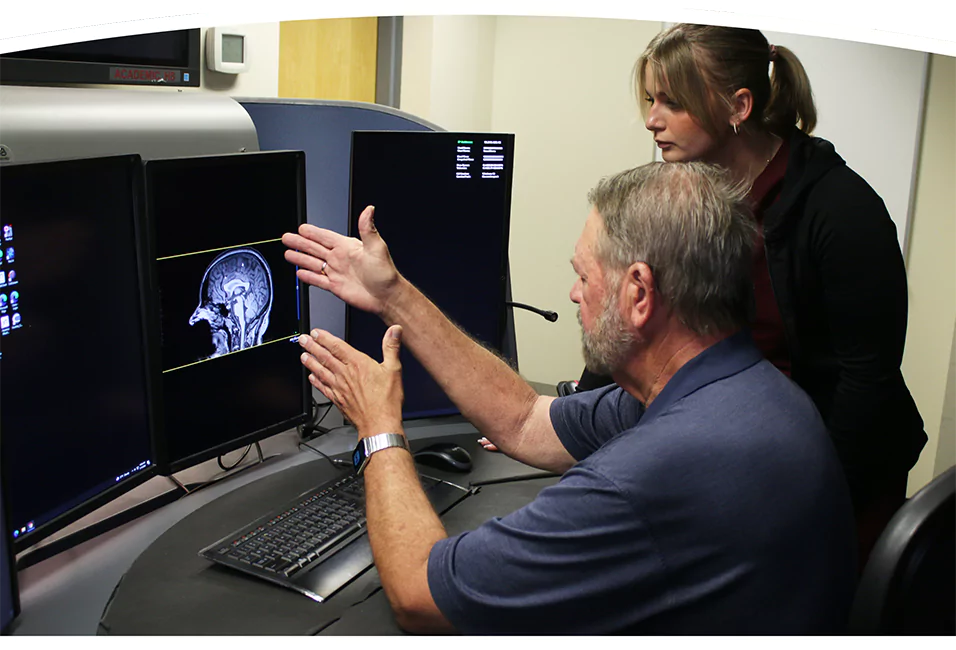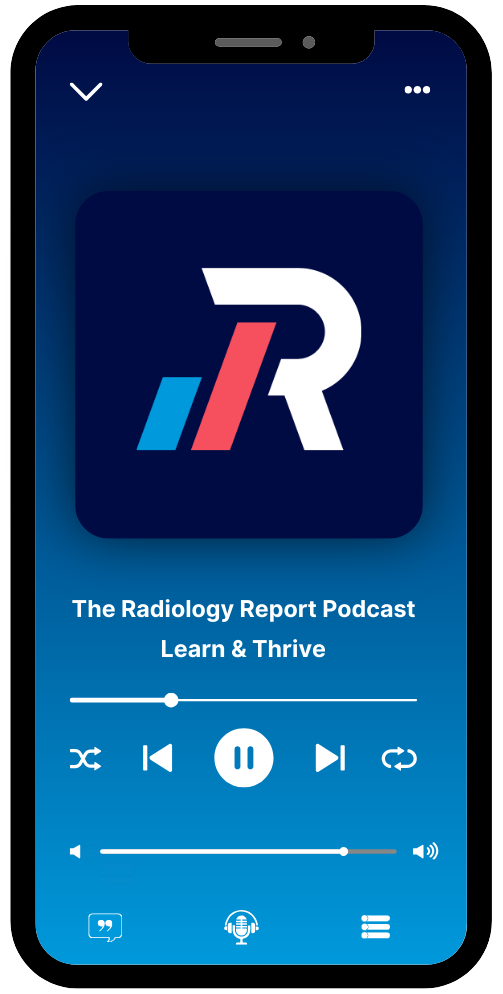During this fireside chat, CEO & Co-Founder Daniel Arnold and Dr. Catherine Jones, Cardiothoracic Radiologist Lead, Professor of Clinical Imaging Science at the University of Sydney and the lead AI researcher at I-MED Radiology, discuss:
- How to address the pressing need for multi-specialized radiologists
- How to accelerate the path to work for residents
- Why radiology is perfectly suited for digital on-the-job training, a game-changer in today’s context
Transcript
Daniel Arnold
Thank you for joining us here for our fireside chat. My name is Daniel Arnold. I'm the CEO and Co-founder of Medality, formerly known as MRI Online and I'm joined here by my good friend and partner, Dr. Catherine Jones, who is a Cardiothoracic Radiologist and the lead AI researcher at I-MED Radiology. Start us off, tell me a little bit about I-MED.
Dr. Catherine Jones
So for everybody who's not from Australia, I-MED is a really large private practice. We have over 300 clinics and we cover public hospitals, private hospitals, teleradiology and a large number of community clinics. We have over 450 radiologists and I guess the thing that makes us interesting is that we don't have a large number of radiologists who are coming through, who are subspecialty trained.
I know that here in the U.S. there's a lot of subspecialists, a lot of people do fellowships after they do residency where that's not so much the common pathway back in Australia. So we very much have a general radiology perspective and probably between 30 and 50% of radiologists have a subspecialty interest. So I first first met Daniel and the team at Medality probably about four or five years ago now, and we started to work together to see how we could improve the radiologists learning experience for the use case in Australia.
Daniel Arnold
Thank you so much. So the topic for today is how to grow your practice when it is impossible to recruit and retain. Every group in the world is having a radiologists shortage and we think education can play a real role. Oftentimes, there's a challenge where 98% of people are specialized, they come in, they maybe just finished an MSK Fellowship and they want to practice 100% MSK and their practice actually needs them to be able to read beyond just MSK. Maybe they need them to read spines or some advanced body or provide call coverage.
So we provide tailored pathways for them to do on the job training. What we've developed with I-MED is called the Junior Consultant Program. Can you tell me a little bit about that?
Dr. Catherine Jones
Thanks, Daniel. So this is something we came up with in conjunction with Daniel and the team at Medality about five years ago. We realized very early on that there was a competition in private and public practice in Australia for the residents as they finish training.
There's a finite number of residents that come through and of course we all want to, bring them over and have them join our groups. One of the things as a resident, no matter how well you've been trained or whether you've done a fellowship or not, there's always a level of concern and anxiety taking the next step into becoming a staff radiologist, or as we would call it, becoming a consultant radiologist.
In order to ease those anxieties, we've said, “Why don't you join our team? We're going to provide you the opportunity to join our Junior Consultant Program.” Essentially what that means is we have up to ten places every year across our network. The radiologist joins having just finished training and they spend about half the time doing general clinical practice, usually in a large clinical environment where there's at least one or two radiologists available to be there to support them. And half the time they do a Fellowship Program. Most of the time, the radiologists finish their residency and they feel a little bit undercooked on MRI and so this is a perfect synergy with Medality being able to tap into their amazing MRI resources not only to do some didactic teaching, but also to allow our newly trained residents to do some virtual fellowships throughout the year.
The other really important part of all of this, and I can't stress this enough, is that they know what to expect at the start of the year. Usually it's a 12 month program and we offer them not only the online mentorship, but we schedule frequent events throughout the year, some of which are online with the team at Medality, but also one on one mentorship throughout the year with our own team in Australia.
So we bring on a variety of consultants. Some of them are dedicated MRI specialists and some of them like me, I'm a Cardiothoracic Imager, but I do a lot of MRI. I give them more of a day to day, mentorship and sponsorship. So it's really important to cover all of the bases…it's about recruiting, it's about making our more junior consultants feel supported, as well as providing them with a really high quality educational product.
Daniel Arnold
Thanks, Catherine and a few elements of this program to highlight. We have a broad range of fellowships and so we can personalize it to the junior consultants interest. Some might want to go deep into MSK and Neuro, others might want to go into Advanced Body or Breast and so they can pick and choose and develop multiple specialties in a period of time to reduce their burnout because they get to practice across a wide range of their interests as well as become really versatile members of the reading team. If they're doing all the same thing every day, we know, that leads to less happy and less fulfilled radiologists.
In addition, it's extremely data driven. You can see a chart here on the slide where we can track each junior consultant's performance across misrates, accuracy, time it takes to read cases, make sure that they're seeing enough volume and competent before they get set loose into an area so that I-MED knows they can provide extremely high quality of care.
We've been talking more and more with groups in the U.S. looking at whether this model might be achievable. At a recent conference I was at with about 30 presidents of private practices, I asked “how many of you are willing to hire right out of residency and no longer require a fellowship”? And over half of the hands were raised and I'm confident that that was not the case five years ago when we started this program and I-MED paved the way.
But one of the things that they really struggle with is there's quite a bit of administrative burden to pull off this program at scale and that's where we come in with our team. We handle all of the administrative work so that the clinicians aren't dealing with additional burden in order to drive this program forward and have successful outcomes from it.
One other key point is it's great for these fellows to be able to come in and start earning a real income one year earlier and great for the program to have additional capacity. One thing that through this partnership and five years of building, we've now released a brand new product called a Fellowship Certificate Program, which is built on the years of experience running these programs. These mini fellowships include over 25 cases. They baseline not just your accuracy, but also your speed.
“How long does it take you to read Knee MRI? How long does it take you to read a Prostate MRI?” Are you improving as you work through those cases? Based on your performance, we recommend the right modules that are high efficiency modules, 2 to 4 minute videos that you can work through at the workstation, but you can also do it on your phone or your iPad.
This all comes together into a Mastery Scorecard. So I can see as an individual that I'm developing competencies, but then also as an administrator, I can understand where your strengths and weaknesses are.
Dr. Catherine Jones
And not only does that really reassure the resident or in this case the fellow, because they're no longer residents, it reassures them that they're getting enough coverage across all of the findings.
So, for example, I was one of the mentors on the MRI Knee program last year, and I had fellows that would say, “but I could report 100 MRI's and never see any of these particular findings because they’re quite uncommon.”
And that's where having the mini fellowships is ideal because all of those pathologies are covered. It's an enriched learning environment. So every case that you look at has been designed to challenge the resident in a further and additional way. I like to call it the inverse Netflix effect. Here's a case you're not going to like because you're going to have to learn something else. Which is what I want if I've got a limited amount of time to devote to learning.
We’re all time poor and that's the same for me as the supervisor as well. When I see my fellows in the clinic with me and we do a readout session, I need to know that when they come to me and they've looked at those cases, because they've already done the online teaching material and then they've done the mini fellowship, that when they come to me and we talk through these cases, I'm not starting from scratch.
I don't have the time to start from scratch and that's really where the Medality product has led to not only the fellows being able to do this at their own pace at a time that suits them, but it's allowed me to have the maximum effect, being able to take them that little bit further for how they actually interact with these cases in the in the clinical real world environment.
Well, the other thing that I would say is that since we started this program about five years ago, we've gone from quite a narrow offering, which is what we needed at the time to a really comprehensive offering of many fellowships. And I'm at the point now where I might actually do a few the next year because I've been so busy doing cardiothoracic the last five years I'd like to go back and do another MSK one. So Dan, we’ll be having a chat after this.
Daniel Arnold
And that's a great segue to broadening how we work with groups. So this junior consultant program is one way which is around onboarding and hiring, but this spans across the radiologists through their entire life cycle within a practice. One of the things that we really enable groups is on practice expansion.
Everyone's facing rising volumes in Cardiac CT, Nuclear Medicine, Pet CT, Pediatrics. Yet if you're a 20 person group or even if you're a 300 person group, chances are you can't hire in those specialty areas and you're going to have to look within your group to find readers that can work with them. And so, for example, we're working with one large 300 person practice that needs ten more prostate readers.
We actually run a 360 degree survey of all of their clinicians to identify people who are interested in learning Prostate MR but don't have the requisite skills. We enroll them in the fellowship and then we enable them to grow their practice. It's something that the radiologists love because now they can learn a new skill, potentially one that reimburses better than maybe the volume that they're currently reading and the practice is finally able to have a little more breadth of coverage.
Dr. Catherine Jones
I think the prostate MRI is a great example. In Australia, we suddenly had reimbursement approved about four or five years ago and so we suddenly not only had radiologists who were keen to upskill in that area anyway, but now we had a really good business case to have more patients coming through for that scan.
So we were able to identify the key areas of interest for us. And because the offering is so comprehensive from Medality, we just itemize them in order of priority and started working our way through. Another great example is Breast Imaging. Again, it can be difficult to find good quality online breast resources and it's a very time intensive process to do that within your own clinic or to send somebody away to do an observership somewhere else.
This is another great opportunity to be able to provide that sort of in-house upskilling as a combination of the didactic teaching, the videos, the self assessment, the mini fellowships, and then being supported by your in-house radiologists who are experts in that field.
Daniel Arnold
The final thing I'll say is, we've been growing really fast and I think one of the reasons for that is our focus on the product. This online educational experience is unlike anything else on the market. It's fun, it's easy to use, and we listen very closely to our customers and constantly innovate on the product and that's why we’re happy to announce we just passed a 125th client, three times where we were this time at RSNA last year, as a testament to how much our radiologists, our end users love and enjoy working with it.
Dr. Catherine Jones
I think I can safely say that if for some reason…in fact we had a survey that went out across our 450 radiologists last year at I-MED asking: “Which of the following educational resources would you like us to retain? Which of the following would you like us to think about?” And it almost across the board, came back saying, “I don't care what you do, but just don't get rid of Medality" because honestly, it's all in one place. It's easy to access, it's very user friendly and you're able to download all of your certificates at the end of the year to say that you've had some CME. So it really ticks all of our boxes.
Daniel Arnold
Thank you. Thanks, Catherine. Thank you so much.
